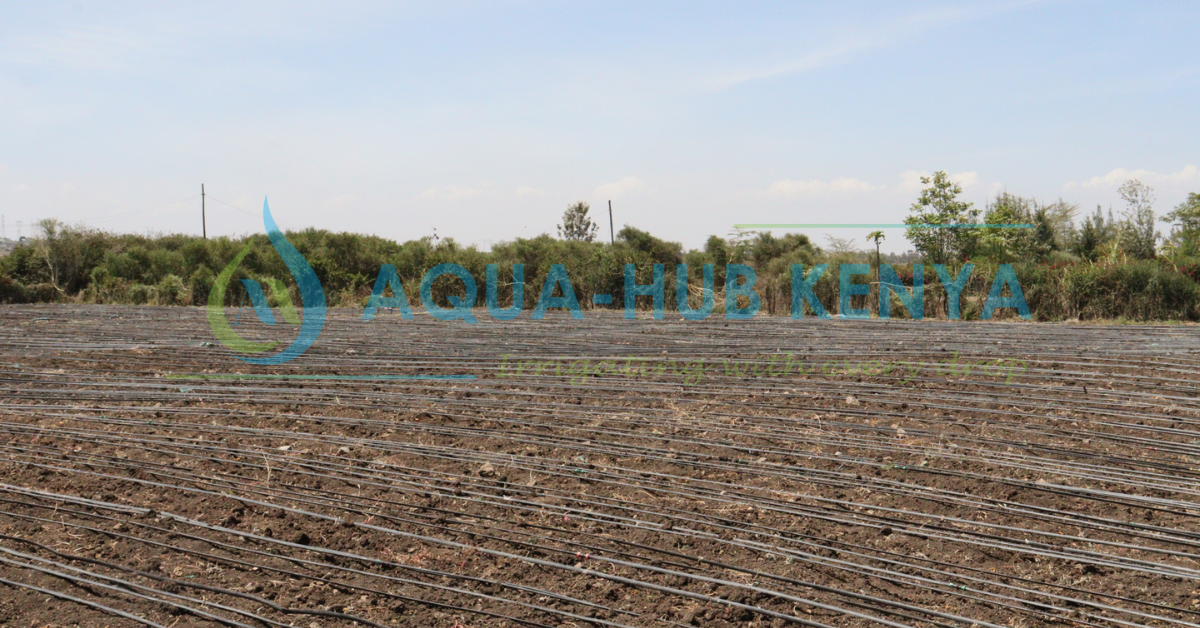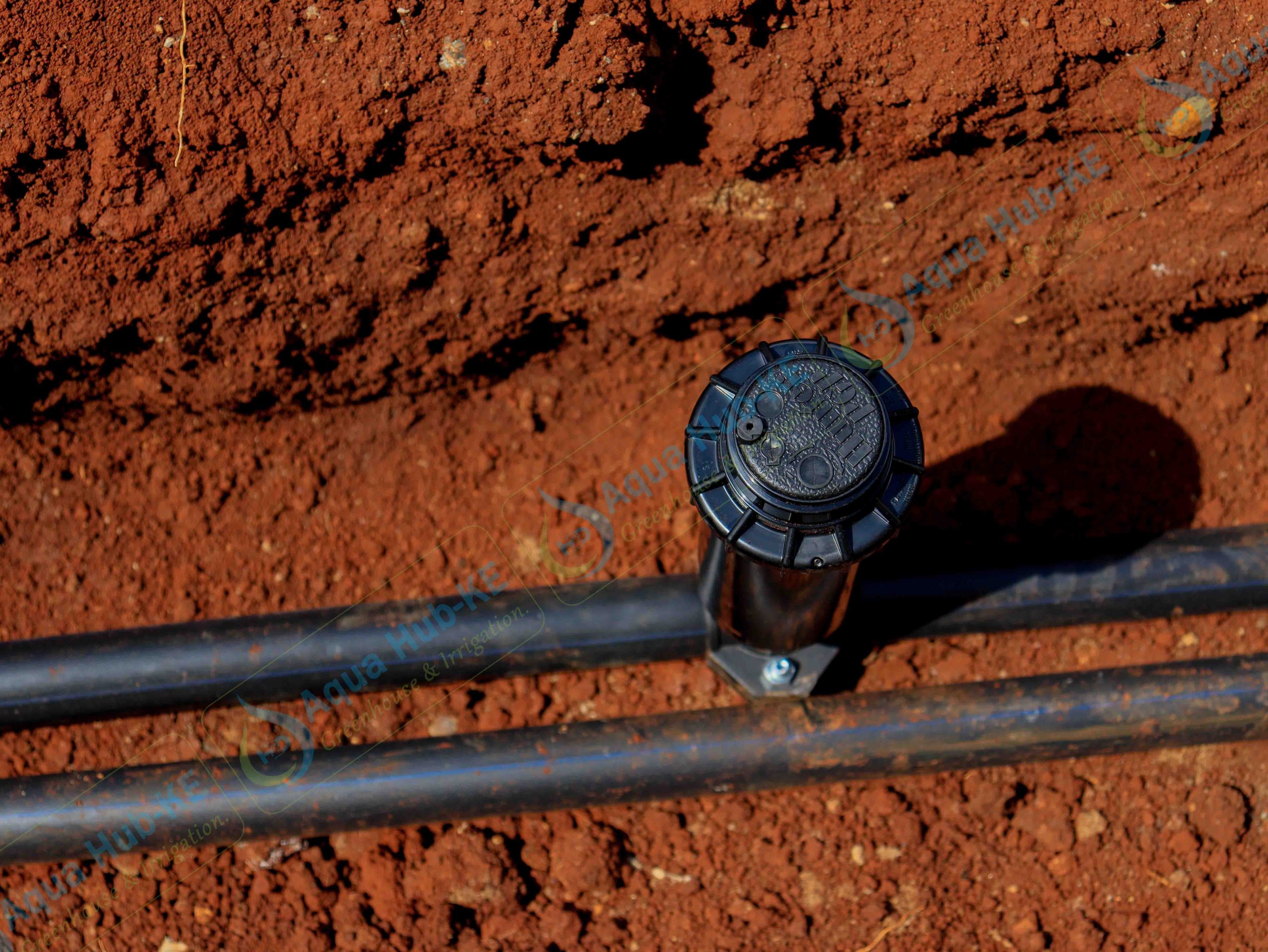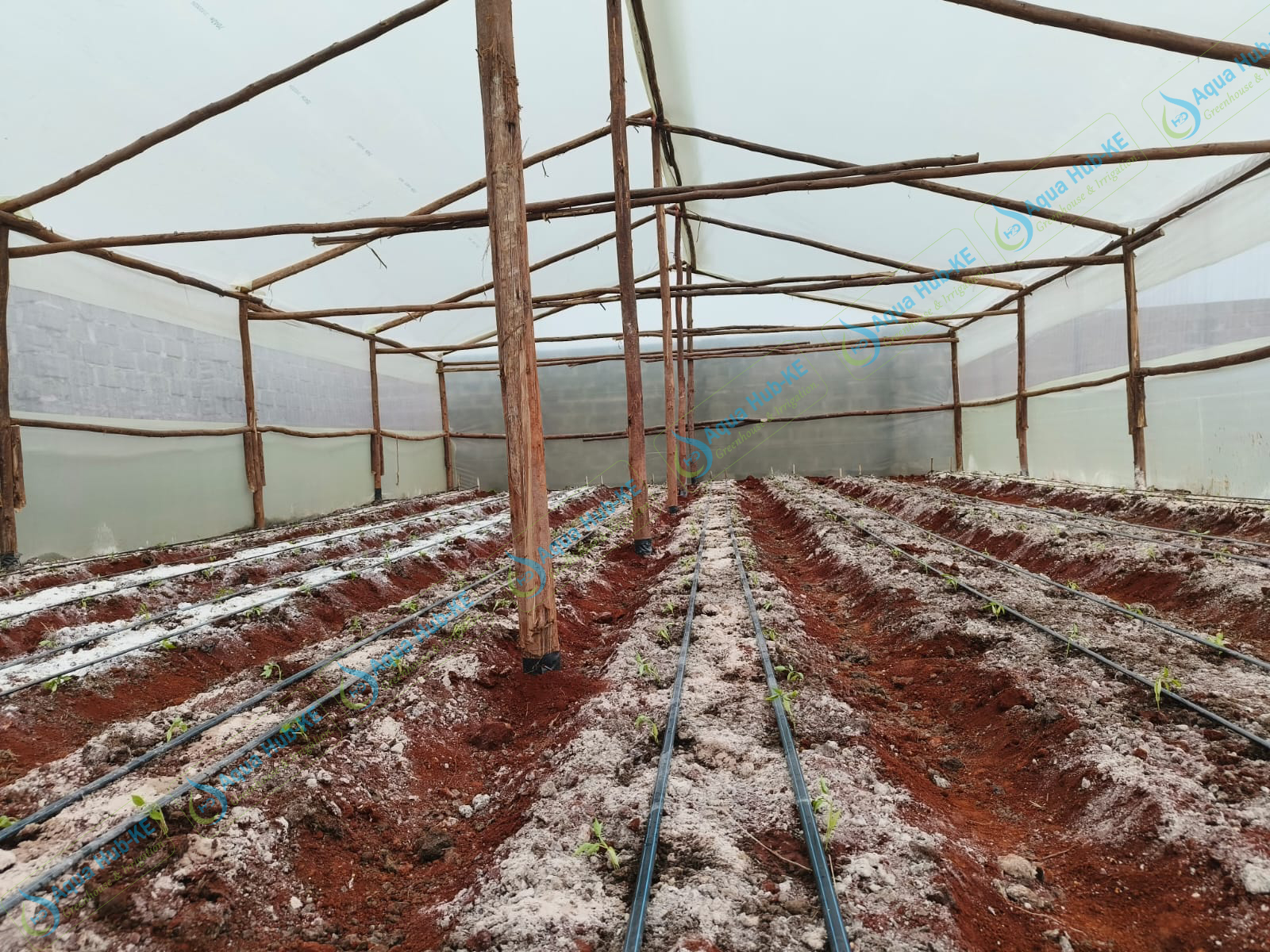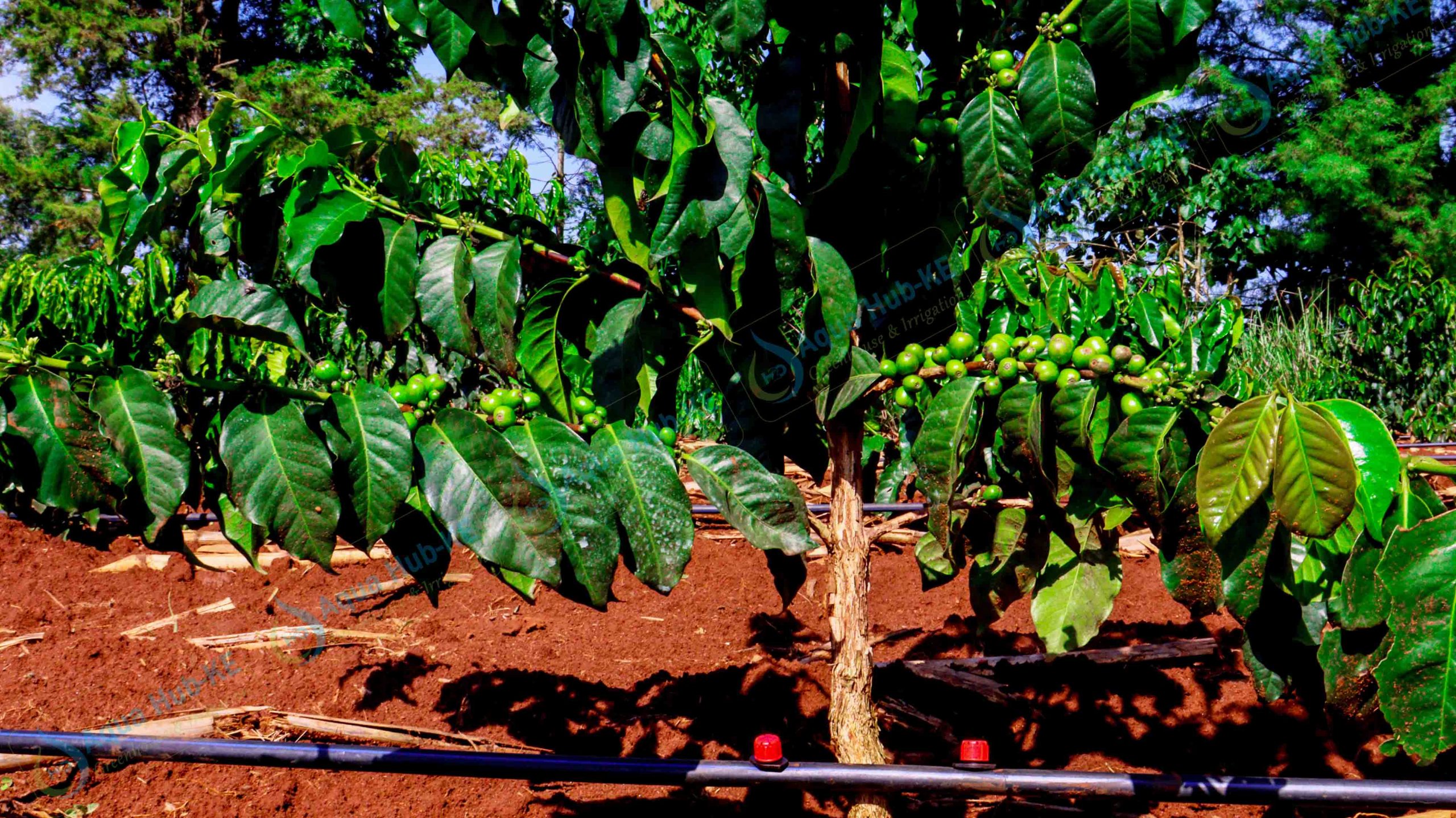Drip lines in Eldoret are the main component of drip irrigation systems. Drip tape is another name for them. We provide drip lines with one emitter and lines with two emitters. Our driplines have a flow rate of 1.1 to 2.2 litres per hour and are UV treated. As one of the drip irrigation service providers in Eldoret, we build the most modern, affordable, and durable drip lines. It is among the most effective irrigation strategies for conserving water. Farmers that utilize drip irrigation instead of alternative techniques like overhead irrigation can save up to 50% more water and fertilizer on their crops. Farmers have more control over how they manage their water supply using drip irrigation.
What are drip lines in Eldoret?
Drip lines are a type of irrigation system applicable in agriculture to water crops. In Eldoret, they are often in areas where water resources are limited or unreliable, and the goal is to conserve water and increase crop yields. Drip lines are comprised of a series of small emitters that slowly release water directly to the roots of plants, reducing evaporation and water waste.
Drip lines are the main part of a drip irrigation system. It is being utilized more and more in horticulture, agricultural, and other irrigation-related businesses because of its efficiency, accuracy, and durability. The drip lines have varying thicknesses. The sizes of the drip pipes offered by Aqua Hub are 0.3mm and 0.4mm.
What are the factors to consider when looking for drip lines?
When selecting drip lines for your agriculture needs, there are several factors to consider:
- Water source: The first factor to consider is the quality and availability of your water source. Including water pressure, volume, and chemical composition.
- Crop type: Different crops have different water requirements. So it’s important to choose a drip line system that can provide the appropriate amount of water and nutrients for your specific crops.
- Terrain: The terrain of your fields will affect the design and placement of your drip lines. Factors such as slope and soil type can impact the water distribution and may require special design considerations.
- Climate: The climate of your growing region will impact the rate at which water is lost through evaporation and the type of emitters you need to use.
- Cost: Drip line systems can vary widely in cost. This depends on the size and complexity of the system, the materials used, and the level of automation.
- Maintenance: Regular maintenance is required to ensure that your drip line system continues to function effectively. Consider the cost and resources required for maintenance when choosing a system.
- Local regulations: Make sure to check and comply with any local regulations regarding the use of drip line systems. Including regulations regarding water use and environmental impact.
By considering these factors, you can select the most appropriate and effective drip line system. This is good for your specific needs and conditions. Therefore, helping you to conserve water, increase crop yields, and optimize your farming operations.
What is the importance of drip lines in Eldoret?
Drip lines are important in Eldoret for several reasons:
- Water conservation: Drip lines conserve water by delivering it directly to the roots of plants. Reducing the amount of water lost through evaporation and runoff. This is particularly important in Eldoret where water resources can be limited or unreliable.
- Increased crop yields: By providing water and nutrients directly to the roots of plants, drip lines can increase crop yields and productivity. This is especially important in Eldoret where food security is a major concern.
- Efficient use of water: Drip lines deliver water at a slow, steady rate. Allowing it to be absorbed more effectively by the plants. Thus, reducing the amount of water that is lost to runoff or evaporation.
- Reduced labour costs: Drip lines can be automated, reducing the need for manual watering and the labour costs associated with it.
- Better control over water and nutrient delivery: Drip lines allow for precise control over the amount of water and nutrients delivered to plants. Hence, enabling farmers to tailor their inputs to the specific needs of their crops.
Generally, the use of drip lines in Eldoret can contribute to increased food security. It also leads to improved water management. Lastly, it increases efficiency and productivity in agriculture.
Which areas are drip lines applicable?
- Large-scale commercial agriculture: Drip lines are commonly applicable in large-scale commercial agriculture operations to efficiently water crops such as fruits, vegetables, and tree crops.
- Small-scale agriculture: Drip lines are also well-suited to small-scale agriculture, including home gardens and small-scale market gardens, where they can help to increase crop yields and improve water efficiency.
- Arid and semi-arid regions: Drip lines are particularly useful in arid and semi-arid regions, where water resources are limited and the soil can be highly porous, leading to rapid water loss.
- Greenhouses: Drip lines are often used in greenhouses to provide water and nutrients to plants in a controlled and efficient manner.
- Landscaping: Drip lines are also used in landscaping to water plants and trees, reducing the amount of water lost through evaporation and runoff.
Drip lines are suitable for which crops?
- Fruits: Fruits such as citrus, avocado, and stone fruits can benefit from drip line irrigation, which can help to conserve water, improve yields, and increase fruit quality.
- Vegetables: Vegetables such as tomatoes, peppers, cucumbers, and leafy greens can also benefit from drip line irrigation, which can help to reduce water loss and provide precise control over nutrient delivery.
- Tree crops: Tree crops such as almonds, pecans, and grapes can also benefit from drip line irrigation, which can help to conserve water and improve yields.
- Herbs: Herbs such as basil, parsley, and cilantro can also be grown using drip line irrigation, which can help to conserve water and improve yields.
- Flowers: Flowers such as roses, gerbera, and chrysanthemums can also be grown using drip line irrigation, which can help to conserve water and improve yields.
What is the cost of drip lines in Eldoret?
The cost of drip lines in Eldoret can vary based on a number of factors. Including the system’s size, the materials utilized, and the exact features and accessories required. Our drip line prices are classified according to size, thickness, and length. We may create bespoke projects to meet the demands of our customers. The prices range between 8000 and 9000 Kenyan Shillings.
| Spacing and Thickness | Length | Price |
| 15 cm, 0.3 mm | 1000 meters | 8,000 |
| 15 cm, 0.4 mm | 1000 meters | 9,000 |
| 20 cm, 0.3 mm | 1000 meters | 8,000 |
| 20 cm, 0.4 mm | 1000 meters | 9,000 |
| 30 cm, 0.3 mm | 1000 meters | 8,000 |
| 30 cm, 0.4 mm | 1000 meters | 9,000 |
| 45 cm, 0.3 mm (on order) | 1000 meters | 8,000 |
| 45 cm, 0.4 mm (on order) | 1000 meters | 9,000 |
What is the lifespan of drip lines?
The lifespan of drip lines can vary depending on several factors, including the quality of the materials used, the operating conditions, and the level of maintenance provided. On average, a well-designed and well-maintained drip line system can have a lifespan of anywhere from 5 to 20 years or more.
The lifespan of a drip line system can be influenced by factors such as exposure to UV light, and temperature fluctuations. The quality of the water, and the presence of debris or contaminants in the water. In general, drip lines made from high-quality materials, such as UV-resistant plastic, and properly maintained with regular cleaning and flushing, can have a longer lifespan and provide more reliable performance.
In order to extend the lifespan of a drip line system, it is important to follow the manufacturer’s recommendations for installation, operation, and maintenance, and to regularly inspect and clean the system as needed to remove any debris or contaminants that may be present.




